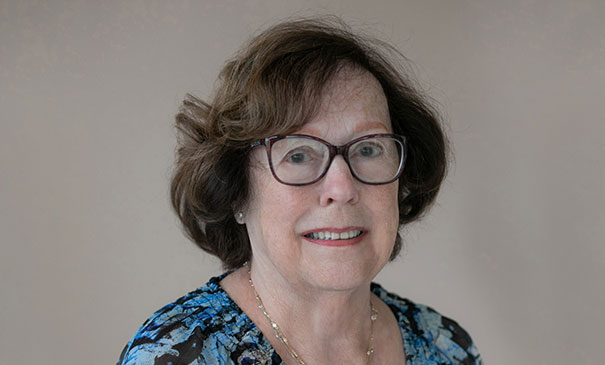
Sherry Haba and her husband Leonard’s life changed when their two-year-old daughter was diagnosed with type 1 diabetes. The year was 1965.
More than six decades later, Sherry is thrilled to see how much progress has been made toward understanding the disease and improving the tools to manage it. She is also continuing her and her late husband’s legacy to push research forward with gifts to the Diabetes Research Program at Benaroya Research Institute (BRI).
A Forever Diagnosis for Sherry’s Little Girl
When Sherry’s oldest daughter, Linda, was diagnosed with type 1 diabetes, she was holding her second child who was just a few weeks old.
“We would have to test our toddler’s blood and urine, measure her food and sterilize every needle and vial,” Sherry says. “Those first few months were the hardest.”
It pained her to prick her daughter’s tiny fingers in preparation for a harder task – giving her a shot of insulin.
“It was awful to see her cry when it was time for a shot when she was too little to understand why,” she says.
Mom, Sherry, Becomes her Children’s Nurse
Eventually, the family got into a new routine. Sherry monitored her daughter’s blood sugar levels 24 hours a day. She spent hours washing and sterilizing vials and syringes. And she documented everything Linda consumed in a notebook to review with the doctor.
“I spent many nights sleeping on the floor of her room so that I could listen to her breathe and wake up to prick her finger and give her something to eat if she needed it,” Sherry says.
When Linda was old enough to start school, Sherry went with her.
“Back then, elementary schools didn’t have nurses. So, I stayed in the school’s office and would test Linda’s blood before lunch and make sure she could get through the day,” she says. “It wasn’t every day, but until she was in middle school and could do it herself, I was always close by.”
As she looked forward to Linda becoming more independent, her fourth and youngest child Steven, who was two years old, was also diagnosed with type 1 diabetes.
Because her kids had to live with strict diet rules to avoid blood sugar spikes, Sherry found creative ways to give her children the same holiday and celebration experiences their friends had. For Halloween, she would wrap dozens of little presents and deliver them to the neighbors ahead of her kids going out trick or treating. When the Haba kids came to the door, the neighbors would happily drop a gift in their pillowcases.
“The kids would come home and unwrap everything, spread all their gifts out on the floor and show us all what they got,” she says. “We couldn’t do things exactly the same as everyone else, but we could still have fun.”
But she believes there’s still more to be done. Over the years, Sherry has applauded BRI’s innovative work to establish ways to predict who is genetically at risk for T1D and their commitment to figuring out how to prevent it. However, her true hope is to see a cure for diabetes in her lifetime.
“I’ve thought about a cure for diabetes every day for more than 60 years,” Sherry says. “I give to Benaroya Research Institute because I support their dedication to understanding every aspect of the disease. The more they understand, the closer that cure will be for all of us.”
Gifts to the BRI help support their mission to advance the science that will predict, prevent, reverse and cure diseases of the immune system. Read more about research and progress through their quarterly newsletter Powering Possibility.
 |
| Terms of Use |  |
Privacy Policy |  |
Notice of Privacy Practices |  |
Site Map |  |
Home |